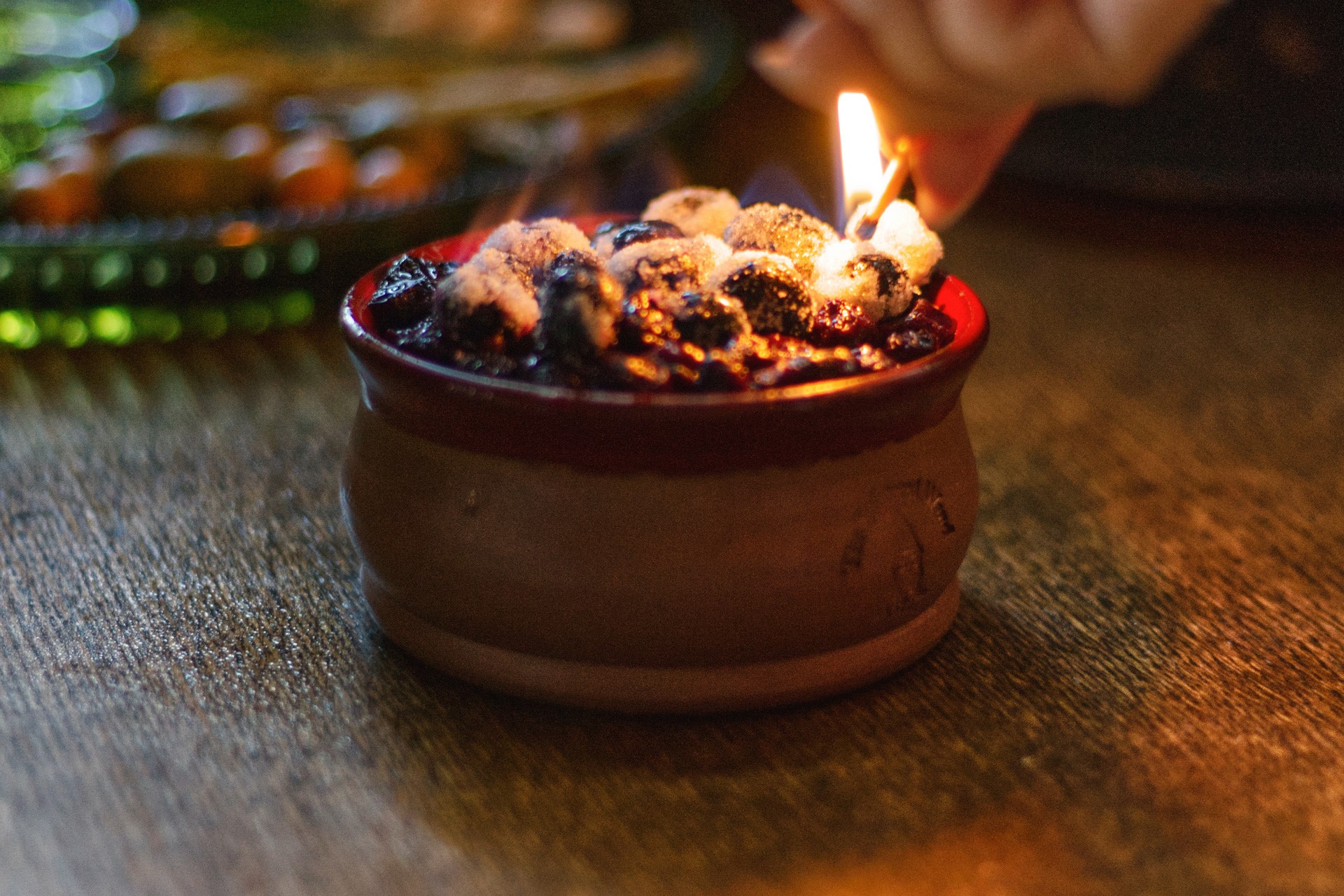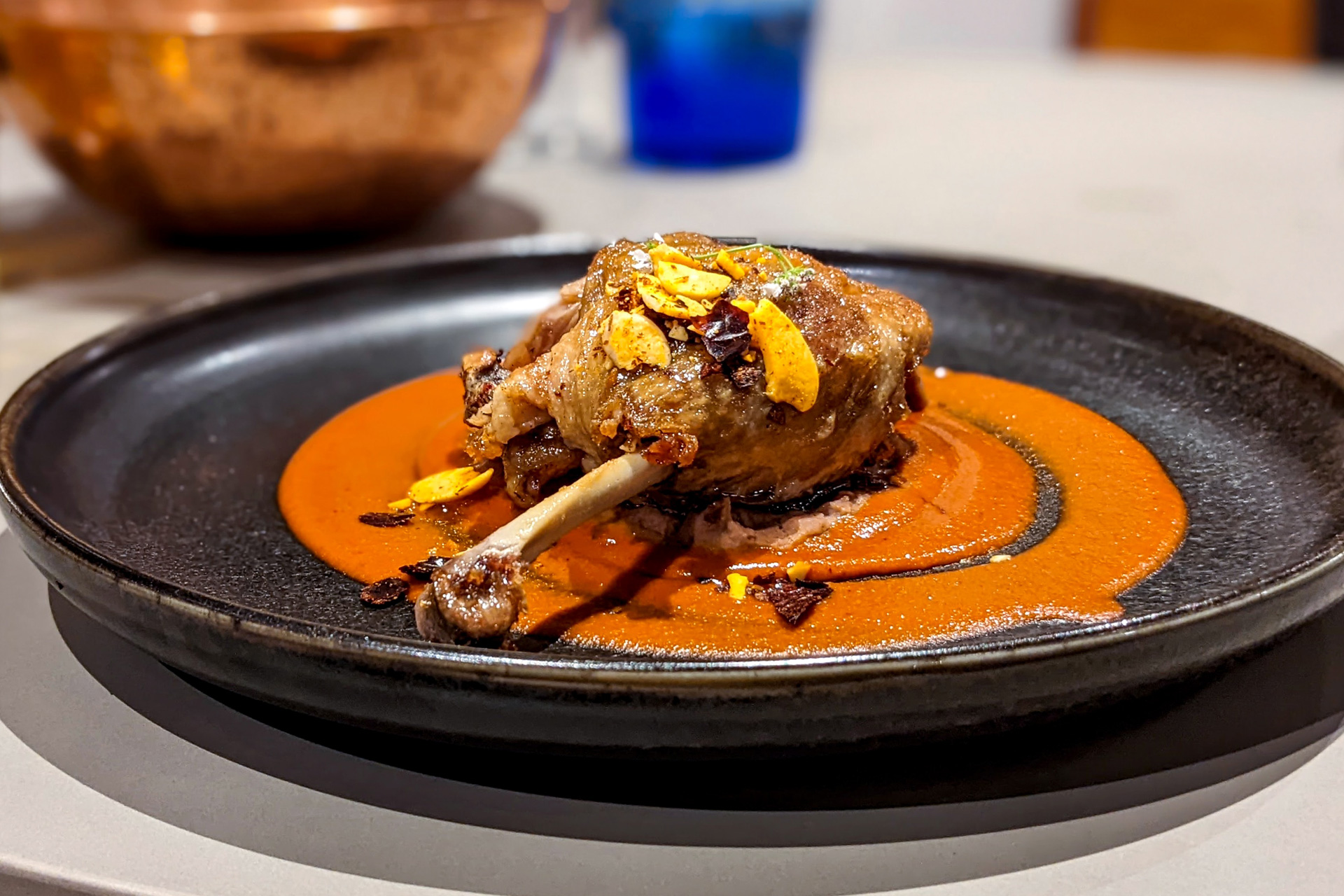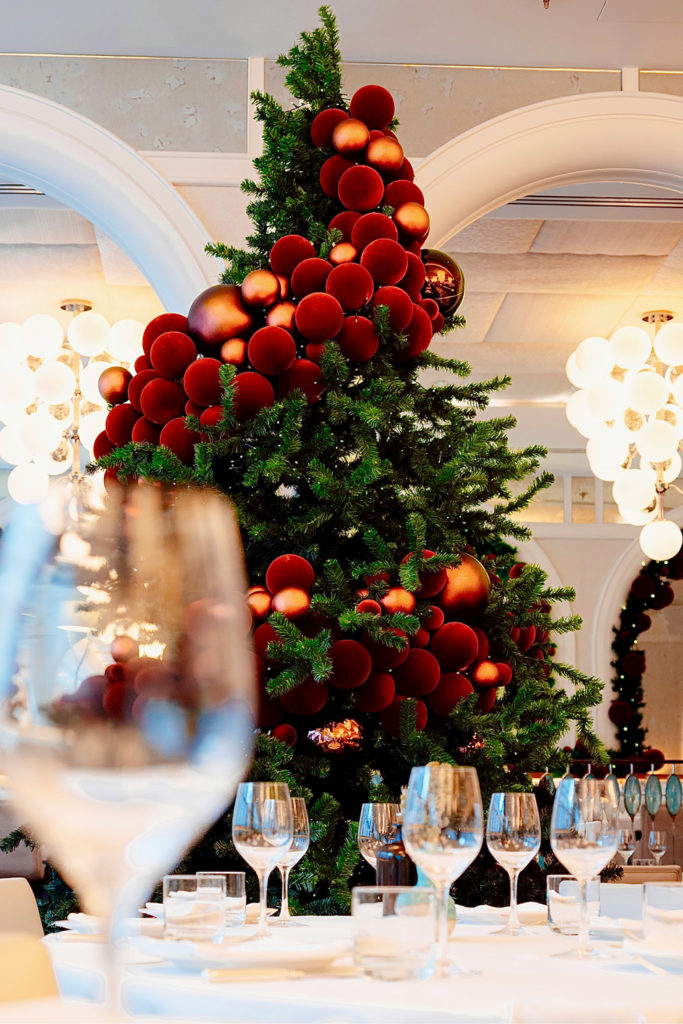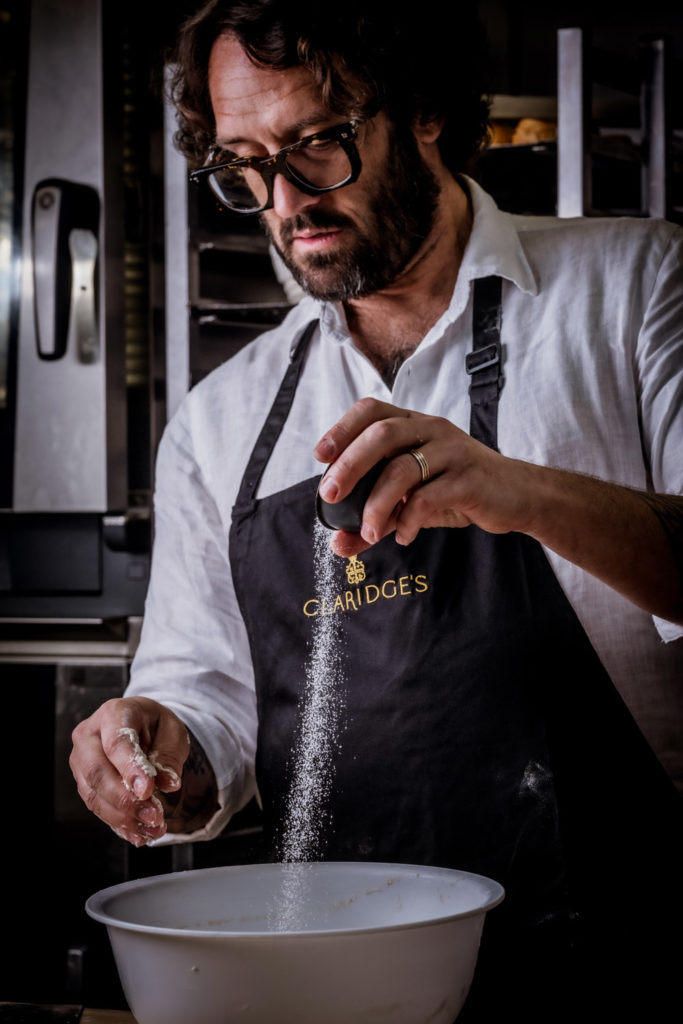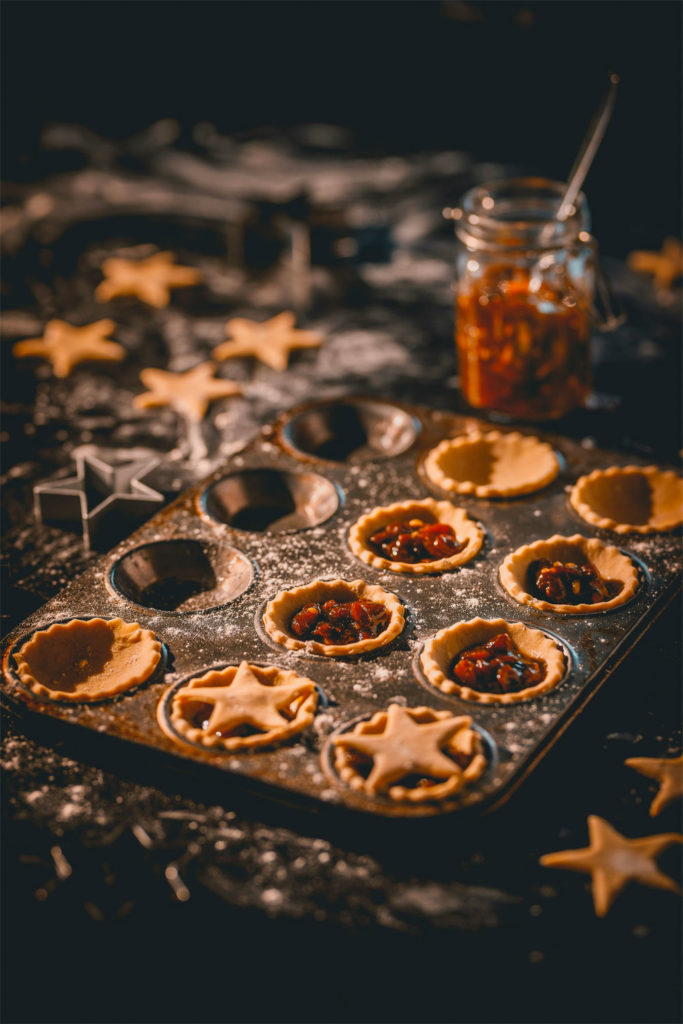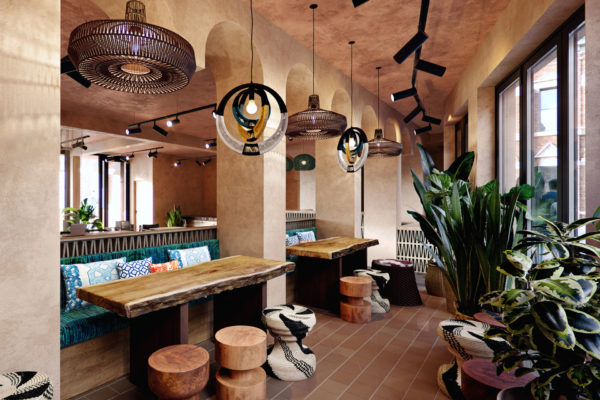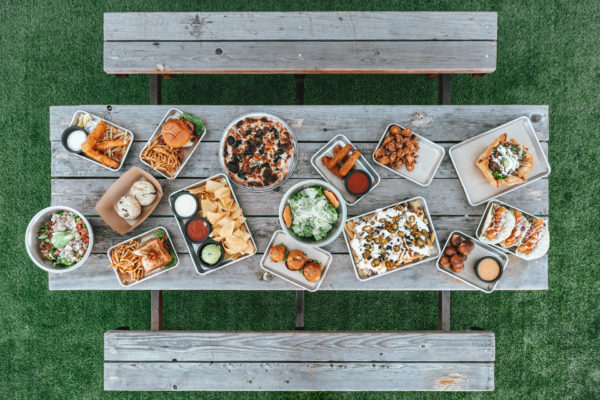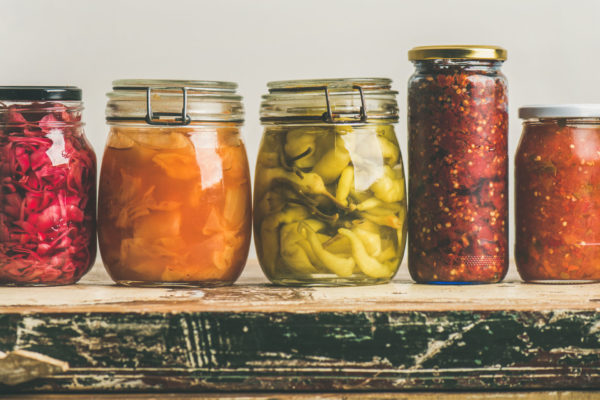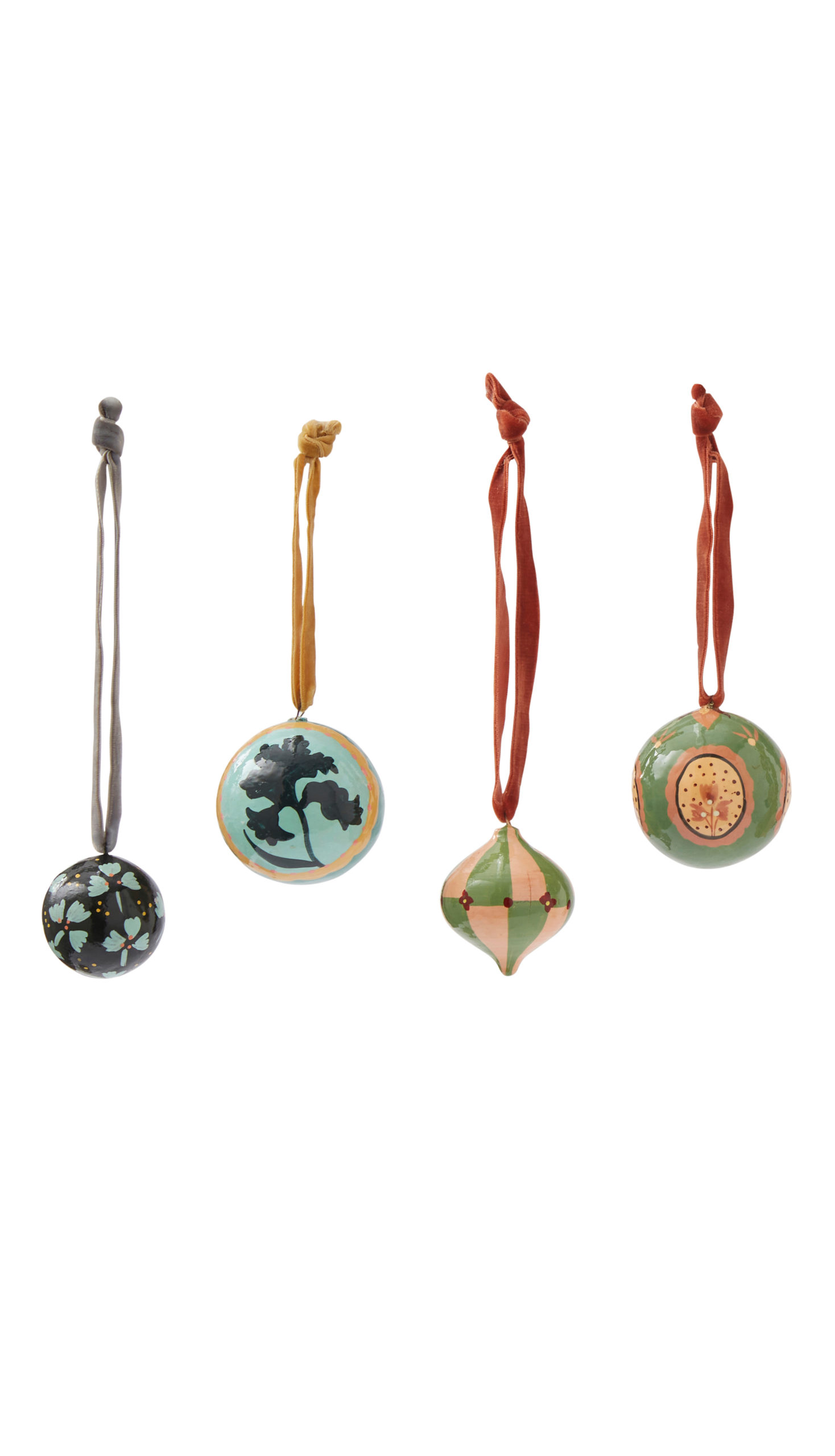Smacked, Sous-Vide & Flambéed: What Does Your Food Menu Actually Mean?
By
2 years ago
Restaurant lingo, decoded
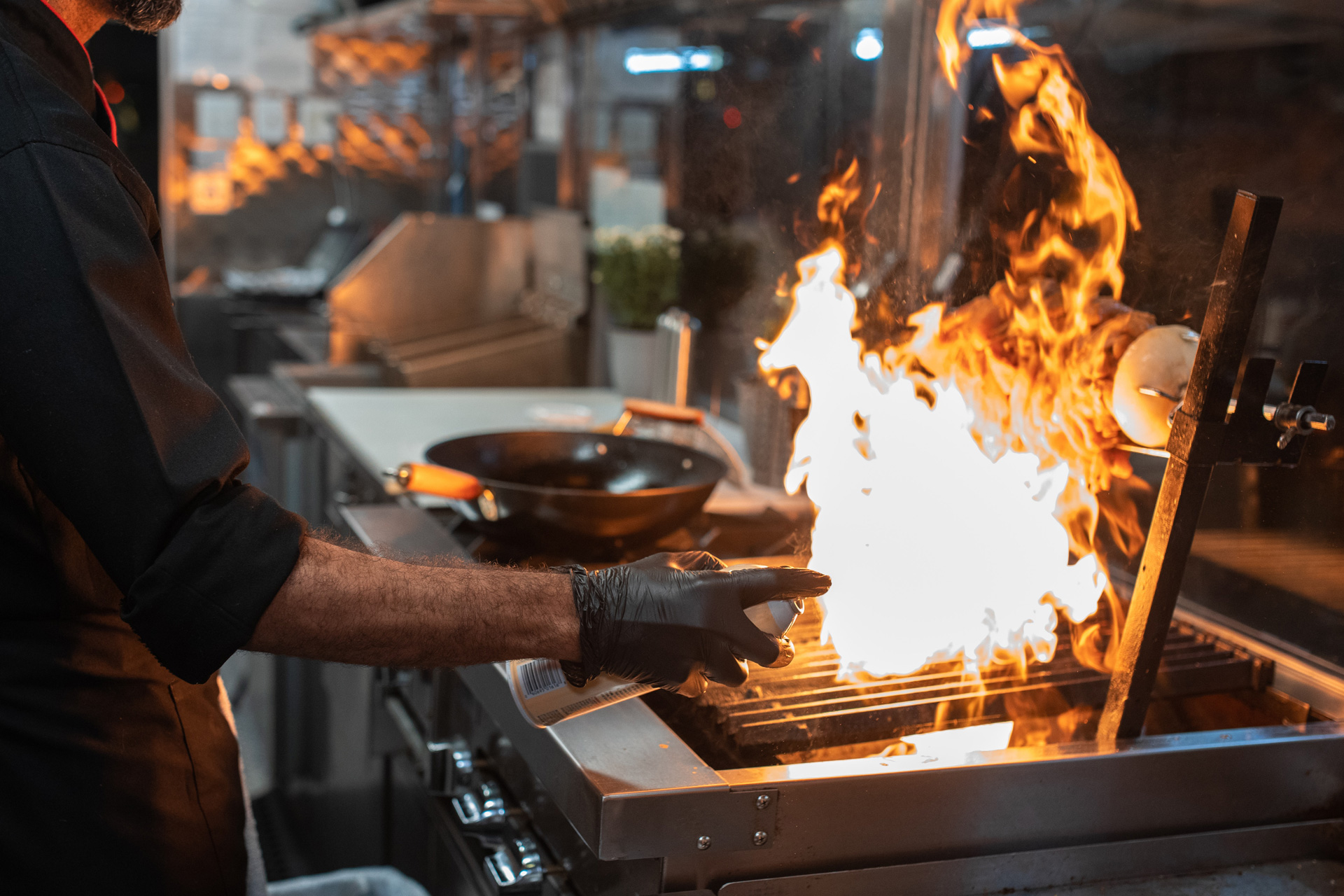
We’ve all been there. You sit down in a restaurant, pick up the menu and panic: it reads like another language. How do you smack a cucumber? What does a pickled kumquat taste like? Do I want my shrimp blackened? According to new research from Resy, 40 percent of us are Googling restaurant terms under the table to decipher what’s up for grabs – while over a quarter of us are risking it, ordering dishes without really knowing what they are.
So what’s behind all this poetic culinary language? Sometimes, it’s a simple case of chefs showing off their fancy techniques; other times it’s about creating an element of fun and intrigue. Head to Shankeys in East London, for instance, and you’ll be faced with curious dishes like ‘Executive Lamb’ and ‘Monkey Tail’, which head chef Sacha Henry says ‘opens up a conversation’. He adds: ‘We choose language that makes it feel down to earth and casual as we don’t want anyone reading it to feel like they can’t ask a question about what the dish is. Then we have all the fun explaining it and seeing their faces when they try it!’
Others, however, think we’re heading back into an era of simplicity when it comes to restaurant menus. Andrew Clarke, head chef at open-fire restaurant Acme Fire Cult, says: ‘The modernist approach really shifted things in terms of introducing new techniques but it’s all been done now. Tropes we’ve previously seen such as naming farms on menus has receded and I suspect it will continue to do so and menus will become more stripped back.’
Saying that, he also points out that diners are increasingly interested in how something has arrived on our plate. At Acme Fire Cult, he says, they’re considering introducing a supporting pamphlet to ‘encourage people to learn more about our techniques such as our open-fire and our ferment room.’
In the meantime, we’ve compiled a list of definitions for the restaurant terms that often pop up on menus, so next time you come across a flambeed strawberry you can impress your fellow diners with your knowledge.
Restaurant Terms & Cooking Techniques: What Do They Actually Mean?
According to Resy, these are some of the menu terms and techniques that Brits are least familiar with – plus their meanings.
Flambéed
Has your dessert ever been on fire? That’s because chefs like to add a touch of theatre with something called flambéeing, which sees a dish being doused in alcohol and set up in flames (just for a moment, until the alcohol has been burned off). It’s not all about the tableside wow factor though: the process actually alters the chemistry within the food, creating a caramelizing effect. Lots of fun, but probably best left to the professionals.
Smacked
At veggie favourite Bubala, one of the most popular dishes is its smacked cucumber. But what does this actually mean? Well, the smacking process is pretty much how it sounds: the technique involves using the flat edge of a blade or rolling pin to smash the cucumber into pieces. In this Ottolenghi recipe, for instance, we’re told to: ‘Trim the ends off the cucumbers, then, using the flat of a large knife, bash the cucumbers repeatedly until they split and break. Scrape away and discard the seedy innards, then use your hands, or a knife, to break the cucumber into random, bite-sized chunks about 3cm in size.’
Sous-Vide
Chefs love to spruce up their menus with a bit of French – but with some terms, this isn’t just a ploy to make it sound fancier. Sous-vide translates as ‘under vacuum’, and refers to a method of cooking where food is sealed in an airtight container then cooked in temperature-controlled water. Often used for proteins such as steak, pork and chicken, it allows something to cook for elongated periods of time, retaining its moisture rather than overcooking.
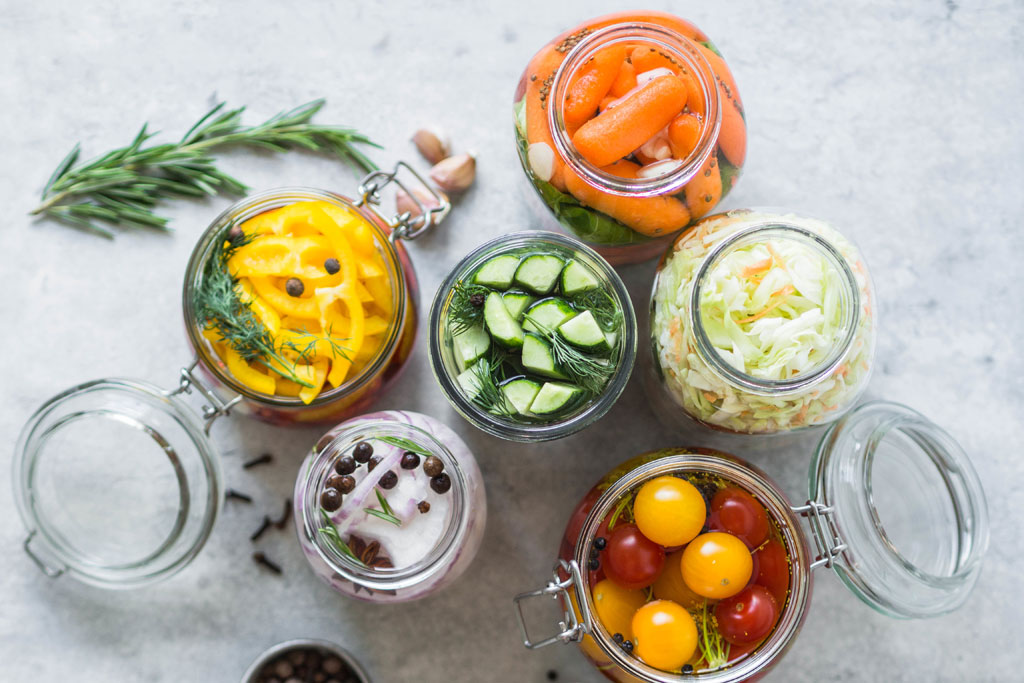
GettyImages
Fermented
This is one kombucha and kefir lovers might be more familiar with. Fermenting is everywhere nowadays, lauded for its gut health benefits, as preserved foods give your body a dose of healthy probiotics. Chef Robin Gill is a big adopter of the technique across his various restaurants. He explains: ‘the basic premise for vegetable and fruit fermentation is to tightly pack or submerge the chosen fruit or vegetable to create an environment where oxygen-dependant mould and organisms cannot grow, thus encouraging and allowing acidifying bacteria to grow instead.’
Confit
Confit duck has long been a staple on French menus, but nowadays we’re seeing the term pop up more in association with other foods – from cauliflower to tomatoes. At its core, confit is about preservation: the word (pronounced ‘kon-fee, FYI), comes from the French verb ‘confire’, which translates as ‘to preserve’. The process sees something being cooked in fat, oil or a water syrup at a low temperature (unlike deep fat frying, which is done at a high temperature), then packed into containers and submerged into the liquid. It can then last for a long time without going bad: confit’ed duck legs, for instance, can last for several months in a fridge – and confit fruit can last for years.
Blackened
No-one wants burnt food, but before you send back your chicken on account of its black crust, consider the fact it might have been deliberately blackened. Often associated with Cajun cooking, the cooking technique became popular in the ‘80s to replicate the flavour and style of charcoal grilling in a commercial kitchen. It usually involves proteins being dipped in melted butter, covered in specific herbs and spices, then cooked in a hot pan (traditionally cast iron) to create that burnt-but-not-burnt taste.

